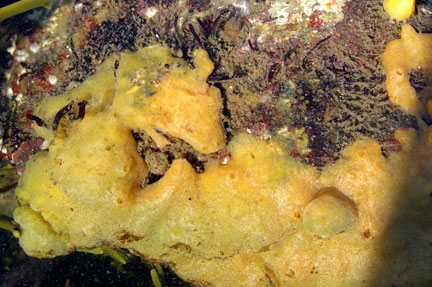 |
 |
|||||||||||||||
|
Halichondria spp. or the crumb of bread sponge, pictured above, gets its common name from its texture. This encrusting sponge can be found growing in tide pools, on low intertidal rocks, and subtidally. It prefers shaded areas, so look for it under rock overhangs and in crevices of tide pools. The greenish-gray color often seen on this sponge comes from a species of microscopic algae called zoochlorellae, that has formed a symbiosis with the sponge. This sponge is also known for its offensive, sulfuric odor released when broken apart or decaying. Sponges have no real organs. Most sponges have a body
made of a flexible protein called spongin which has tough, interlocking
fibers. The
sponge gets its structure from hard, multi-pointed rods called spicules.
Each species has uniquely shaped spicules made of
silica or calcium carbonate. |
||||||||||||||||
Did you know... |
||||||||||||||||
|
||||||||||||||||

